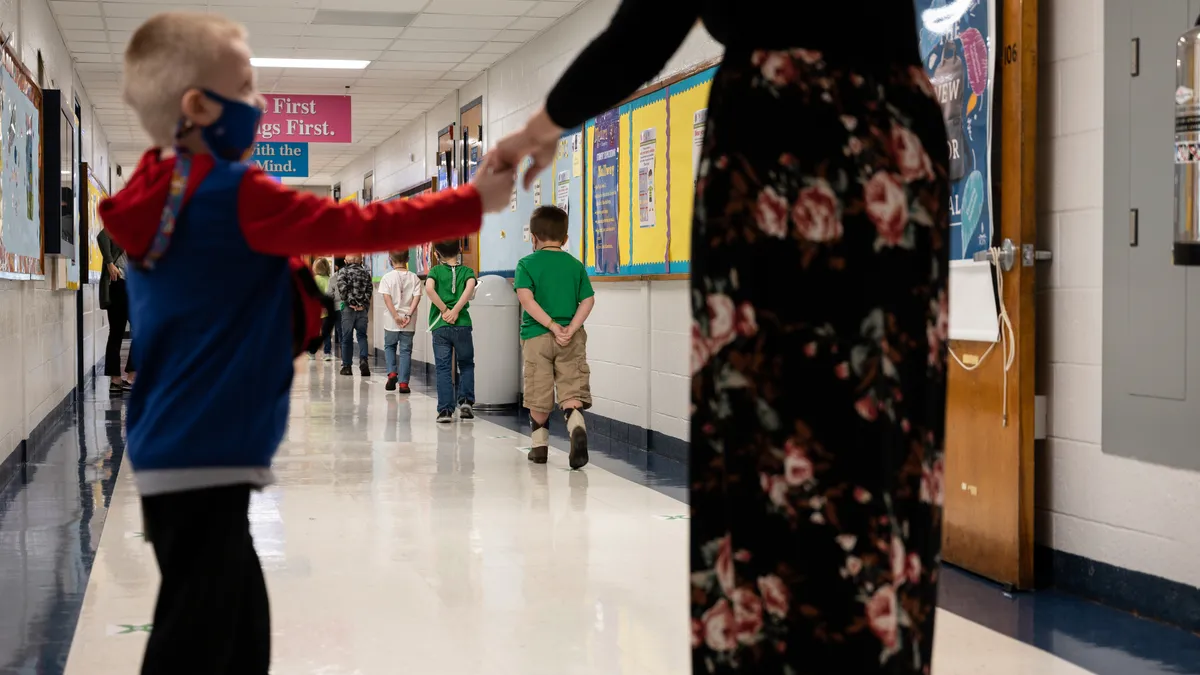Dive Brief:
- Fulfilled substitute teacher requests spiked by nearly 50% in Chicago Public Schools from a bonus program launched pre-pandemic in highly segregated schools, according to a paper from the Annenberg Institute at Brown University. The effort resulted in more than 13,000 student-hours of classroom coverage per participating school.
- The stipends included $30 to $40 in addition to a daily fee of $165 in the 2018-19 and 2019-20 school years. Researchers concluded the annual investments for the stipends — $1.1 million in 2018-19 and $1.7 million in 2019-20 or about $34 per student at participating schools — were "highly cost-effective."
- Money alone, however, isn't the solution when recruiting for substitutes in schools with high populations of students of color and students from low-income communities, according to a FutureEd summary of the Annenberg paper. Better training and working conditions for substitutes are needed, but more than that a much larger effort is needed to confront the "causes and consequences of the racial and economic inequality" afflicting cities.
Dive Insight:
Finding substitute teachers, already a problem before the pandemic, was made more difficult during the public health crisis. An overall shortage of teachers and substitutes led to schools canceling classes, merging classes, having administrators fill in as classroom instructors, and loosening qualifications for substitutes.
Before the pandemic, about 80% of classrooms that needed substitutes found coverage, Amanda von Moos, co-founder and executive director at Substantial, a nonprofit focused on improving substitute teaching, told FutureEd, a think tank at Georgetown University's McCourt School of Public Policy, in October 2021. By fall of 2021, however, that figure seems to have dropped to 50% to 60%.
American Rescue Plan guidance from the U.S. Department of Education points to increased pay for substitute teachers and creation of resident substitute programs as examples of evidence-based practices to address shortages.
In a Rand Corp. survey of district leaders, 60% said their districts had raised pay or benefits for substitutes in the 2021-22 school year.
Indeed, increasing compensation for substitute teachers was one of the fastest-growing education spending categories in the first three school years of the pandemic, according to a McKinsey & Company report released this month. The management consulting firm estimates this will remain one of the top five fastest-growing spending categories over the next three school years. The firm also said substitute pay has increased nearly 20% on average since 2020.
Chicago's pilot program to increase substitute pay began in an effort to draw and retain substitutes to predominantly low-income communities, which had a more difficult time than wealthier communities filling vacancies, according to FutureEd's summary.
Inequities in substitute coverage is a civil rights issue, the summary said. Black students in the district experienced substitute-less classrooms at more than three times the rate of their White classmates. For students from low-income backgrounds, they were more than twice as often as their more affluent peers to lack substitutes.
The additional stipends not only boosted the filled substitute requests at those schools, but also led to a "slight but significant positive effect on student achievement in English language arts," the summary said.
There was also a slight increase in teacher absenteeism, which researchers attributed to teachers taking time for professional development knowing that their classes were covered by a substitute.
The incentive costs of $1.1 million during the 2018-19 school year came in addition to the $42 million expense for the base pay for all substitutes that year. The $1.1 million represented less than 0.03% of the district's total instructional budget, the Annenberg Institute paper said.
In a survey during the pilot program, two-fifths of Chicago’s substitute teachers said they wouldn’t work in the targeted schools even with a 25% pay hike, citing concerns about safety in the surrounding neighborhoods and the distance from their homes. Many of the schools in the pilot were in communities with higher crime rates, according to the summary.
The Chicago pilot also found schools in more affluent neighborhoods showed higher rates of filling substitute teaching vacancies compared to schools offering substitutes an additional 25% stipend.
"We estimated that it would take almost a 50% bonus targeted to hard-to-staff schools to fully level the playing field," the summary said.







 Dive Awards
Dive Awards





